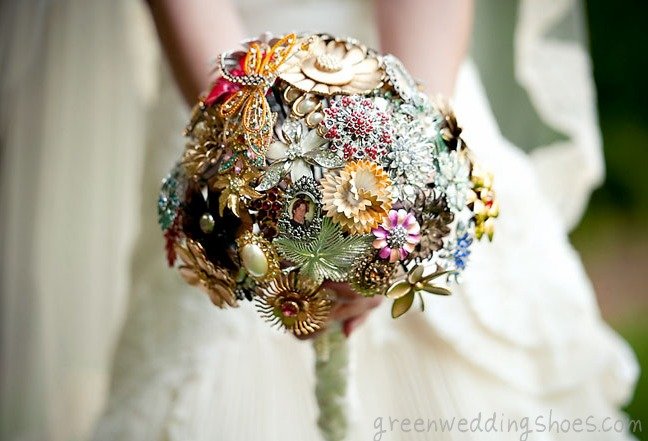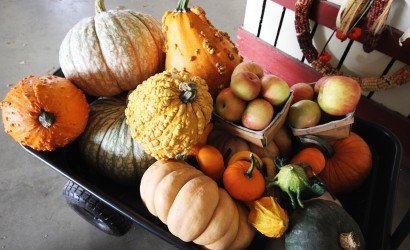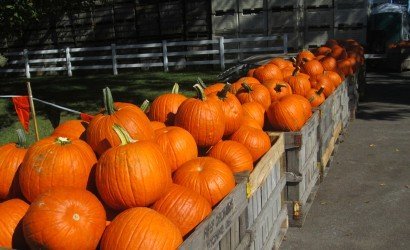The bridal bouquet, statement accessory of the ceremony—it is clutched possessively in the bride’s hands as she makes her way towards her beloved. It often hides shaking hands, guides the way down the aisle, and is a topic of conversation post-ceremony. For modern brides, the bouquet is mostly a thing of beauty, differing greatly from the practical, fanciful, and meaningful purposes it once held. In the spirit of “everything old is new again,” consider using some of the forgotten bouquet traditions for your special day.
Greeks and Romans, and Other Ancients Start a Trend—Ivy, Vines, and Herbs
The Greeks and Romans, often serving as the root of most traditions, began the practice of wearing crowns and garland for wedding ceremonies—even the groom donned the festive accessories. Brides added ivy as a symbol of ever-lasting love and fidelity. Sage would have been used to signify wisdom, dill meant lust. Garlic, often used in ancient bouquets and garland was meant to ward off evil spirits, and temptation. Thus a wedding bouquet featuring both dill and garlic signified that a bride would only want for her husband. The Spaniards favored orange blossoms. Since the flowers and fruit bloom at the same time, they stand for fertility.
During the Middle Ages, flowers gained significant popularity, often thought to stem from the creation of Mary Gardens—places of reverence and worship devoted to the Virgin Mother, with varieties of flowers chosen to signify her presence. The wedding ceremony, as a religious ritual would also incorporate flowers thought to symbolize the divine. Additionally, flowers were used for their scent more and more, for extremely practical and completely unromantic usages, such as to cover up the odor brought on by plagues. It was the Victorians, however that took the meanings of flowers to an entirely different and very romanticized level.
Victorians—Florigraphy, the Secret Language of Love
Most people can determine a favorite flower from amongst the thousands of varieties—distinguished by a certain shape or color, chosen for the fond childhood memories it conjures up, or for a place once visited. Long ago, flowers had deeper, and even hidden meanings—often code for the language of love. What if we again adopted the long-ago tradition using flowers as expressions of endearment? Wouldn’t that make choosing the flowers in a wedding bouquet that much more memorable?
There is a language little known;
Lovers claim it as their own.
Its symbols smile upon the land,
Wrought by Nature’s wondrous hand;
And in their silent beauty, speak
Of life and joy, to those who seek
For love divine and sunny hours,
In the language of the flowers.
(From The Language of Flowers, 1875)
Florigraphy, which came into fashion during Victorian times, is the study of flowers and what they mean. Often a secret language for lovers who lacked the words to express their emotions, or were prohibited from making their intentions known in a public manner, these coded meanings indicated flowers played an integral part as message carriers in many relationships. Ordering a bouquet for an anniversary, or selecting flowers for a bridal bouquet was not a simple task, as most Victorians were at least familiar with florigraphy. Imagine the scandal if a bride chose a bouquet of Peonies, which could mean either shame or anger, and Oleander meaning beware.
Modern brides choose flowers for ceremony and reception decor, and bouquets for their bridal bouquets and attendants based more on aesthetic appeal. For instance, she’s chosen the colors of teal and peach as her accents, the florist then suggests which flowers are available in those hues; the theme is tropical, indicating Bird of Paradise as an obvious choice, or she absolutely adores orchids and cannot imagine her centerpieces being complete without the statuesque yet delicate Orientals.
Consider choosing flowers for their meanings, instead. Gerber daisies stand for innocence, lilacs for the initial and honest feelings of love; Amaranth means immortality in love, and Forget-Me-Nots, since 15th Century Germany, have literally meant a love that cannot be forgotten. For a full list of flowers and their meanings, visit this gardening site. Be forewarned, the language of florigraphy was often contradictory—flowers may have more than one meaning. If conflicted, choose the one that best suits you.
Fashion Forward Trends in Bridal Bouquets
Antiquated customs aside, new trends in bridal bouquets are quite divergent—many don’t even include flowers. The do-it-yourself mentality—homespun approaches that bring forth a bride’s creativity, sometimes enabling her to make family heirlooms a focal point of the ceremony, or put a favorite pastime on display—are becoming quite fashionable.
Bouquets from vintage broaches and jewelry can be made entirely of cherished family heirlooms—eccentric great-aunt Sally’s collection of costume flower necklaces, or Grandma’s antique beaded pins and cameos—combine to make original bouquets that cannot be replicated. Perfect for winter weddings when flower prices can be exorbitant, these bouquets will last forever, their grandeur preserved. Visit this collection of Vintage Broach Bouquets for inspiration.
Bring on the vegetables and fruit…for bridal bouquets? This emerging trend is an ideal choice for chefs, gardeners, foodies, anyone who is socially aware, or for a bride who seeks a truly unique option for her bouquet. Often made from greens already on hand, these materials significantly reduce a bouquet’s carbon footprint. Much like the simplicity of hand-tied bouquets made of wildflowers picked from a field in summer months, these components can be plucked from gardens, or picked up at a farmer’s market year round—using seasonal veggies and fruits are key. Winter weddings could feature the deep purple leaves of kale and the soft greens of succulents. These bouquets could also bring back the ancient Greek custom of using herbs, incorporating the old, with the very new. Exquisite examples of fruit and vegetable bouquets, found here.
If you are a bride who married on the Eastern Shore, and had a beautiful bouquet you’d like to share, contact us at info@shorebread.com, and we may feature you, and your inspirational style.
Wedding Florists on the Eastern Shore:
- Easton, St. Michaels: Monterary Farms
- Rehoboth Beach: South Pacific Florist
- Ocean City, MD: Ocean City Florist
- Flowers By Allison 410.213.8330
- Salisbury, MD: The City Florist
Read other Down the Aisle – Eastern Shore Style features:
- The Master of Ceremonies, Todd DeHart
- Capturing the Moments with Tiffany Caldwell Photography
- Wedding Cakes by Desserts by Rita
- Amber Nicoles, Defining the Shore’s Bridal Style
- Forever Lucky Films
- Down the Aisle – Eastern Shore Style









